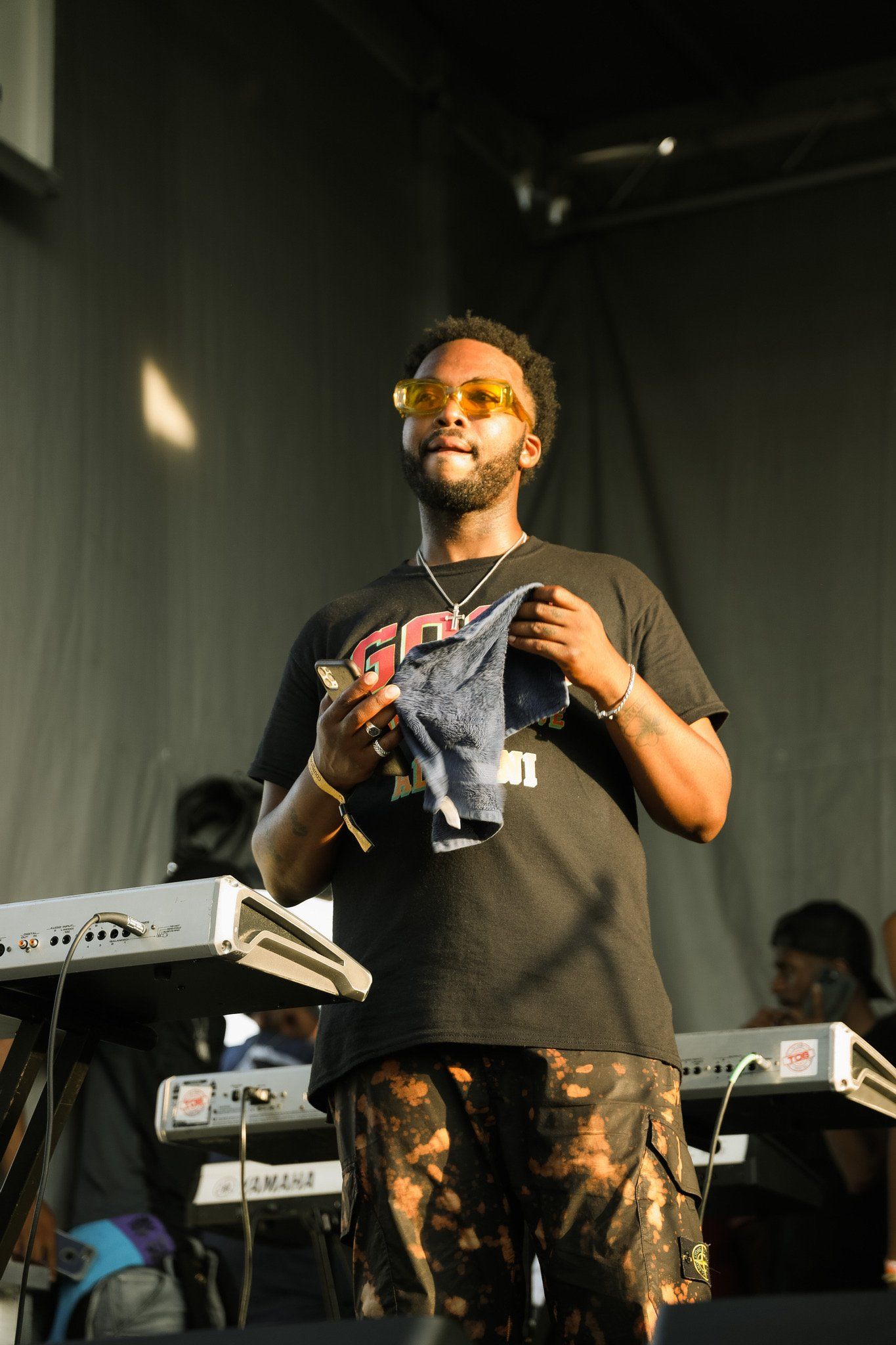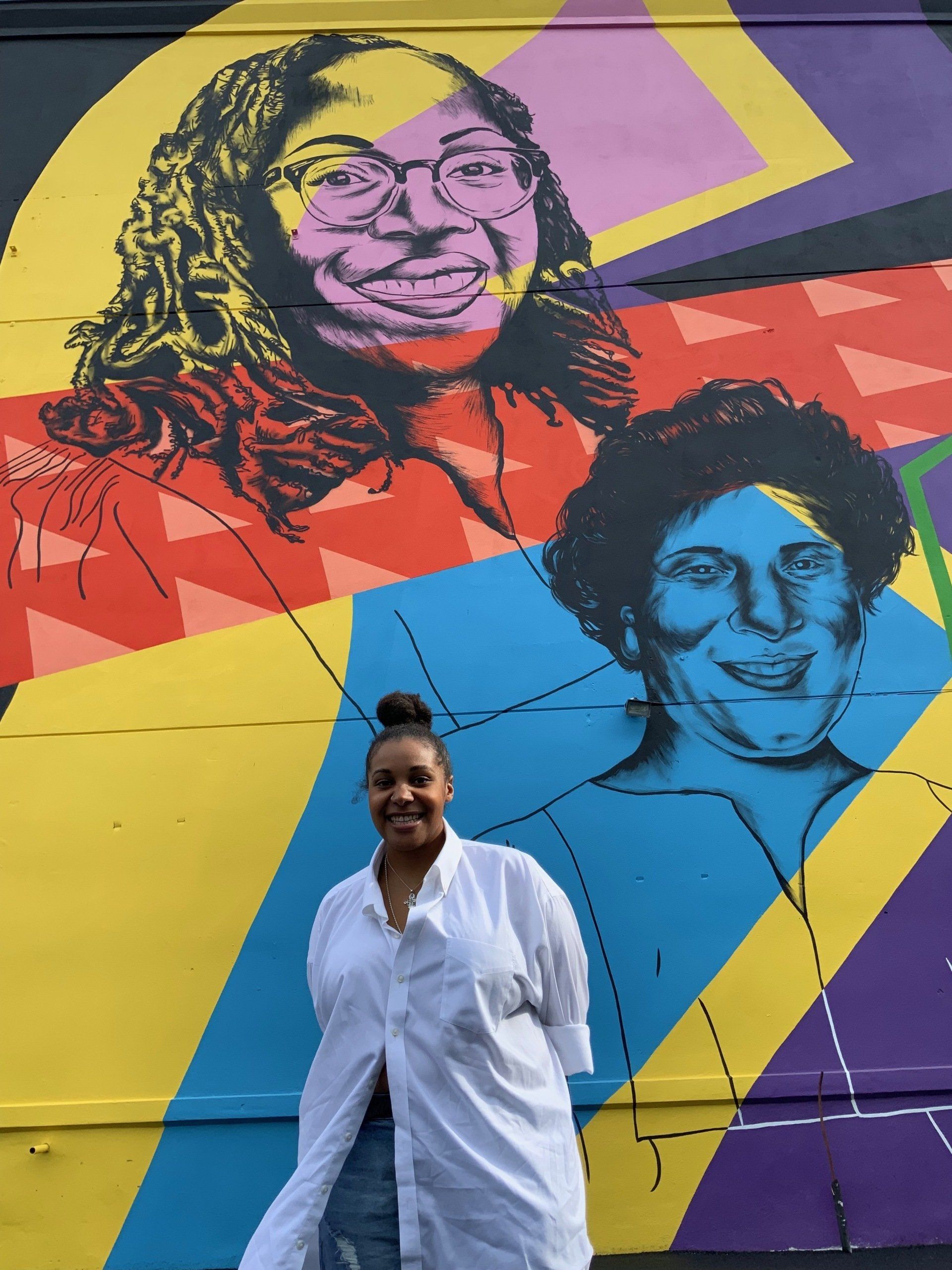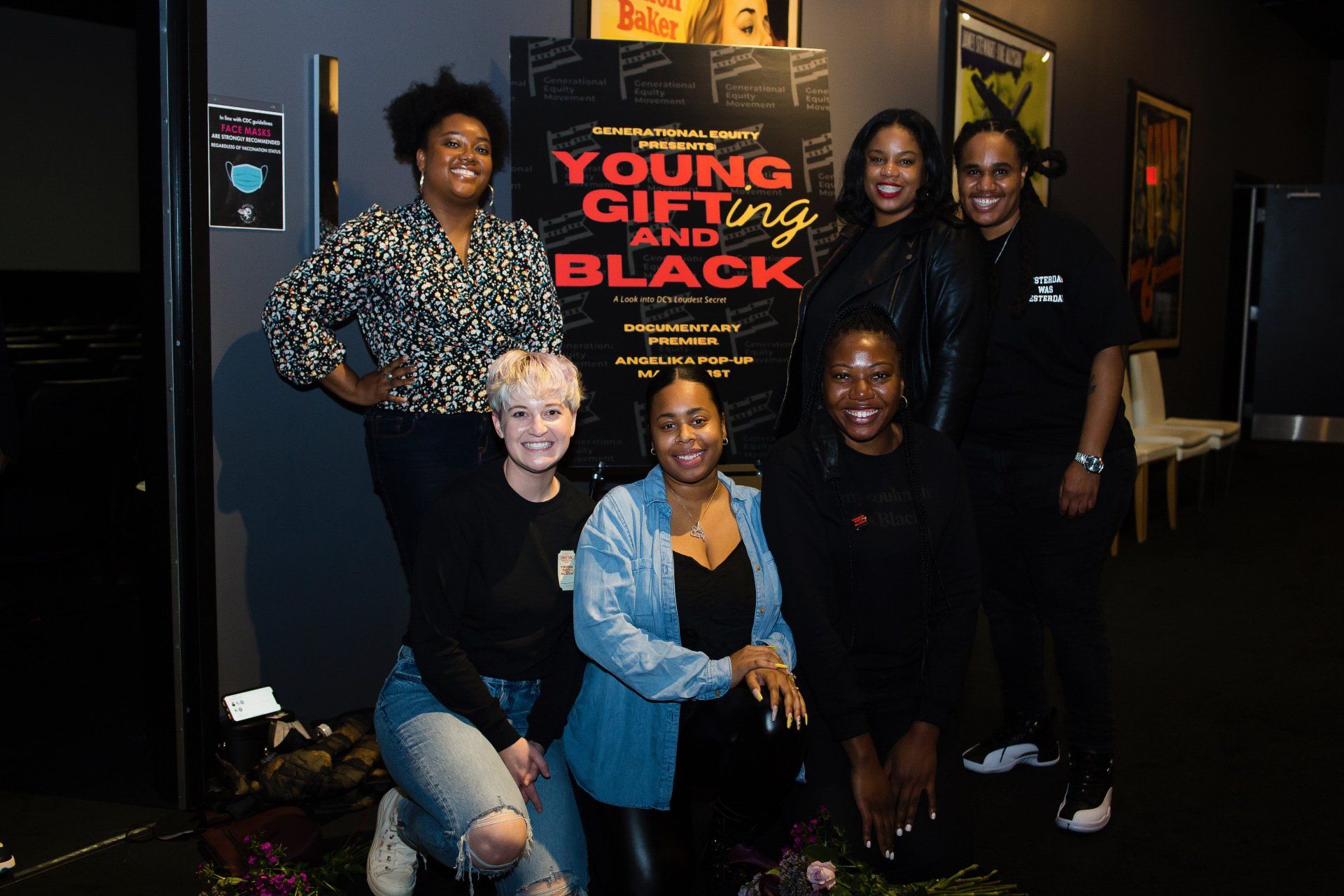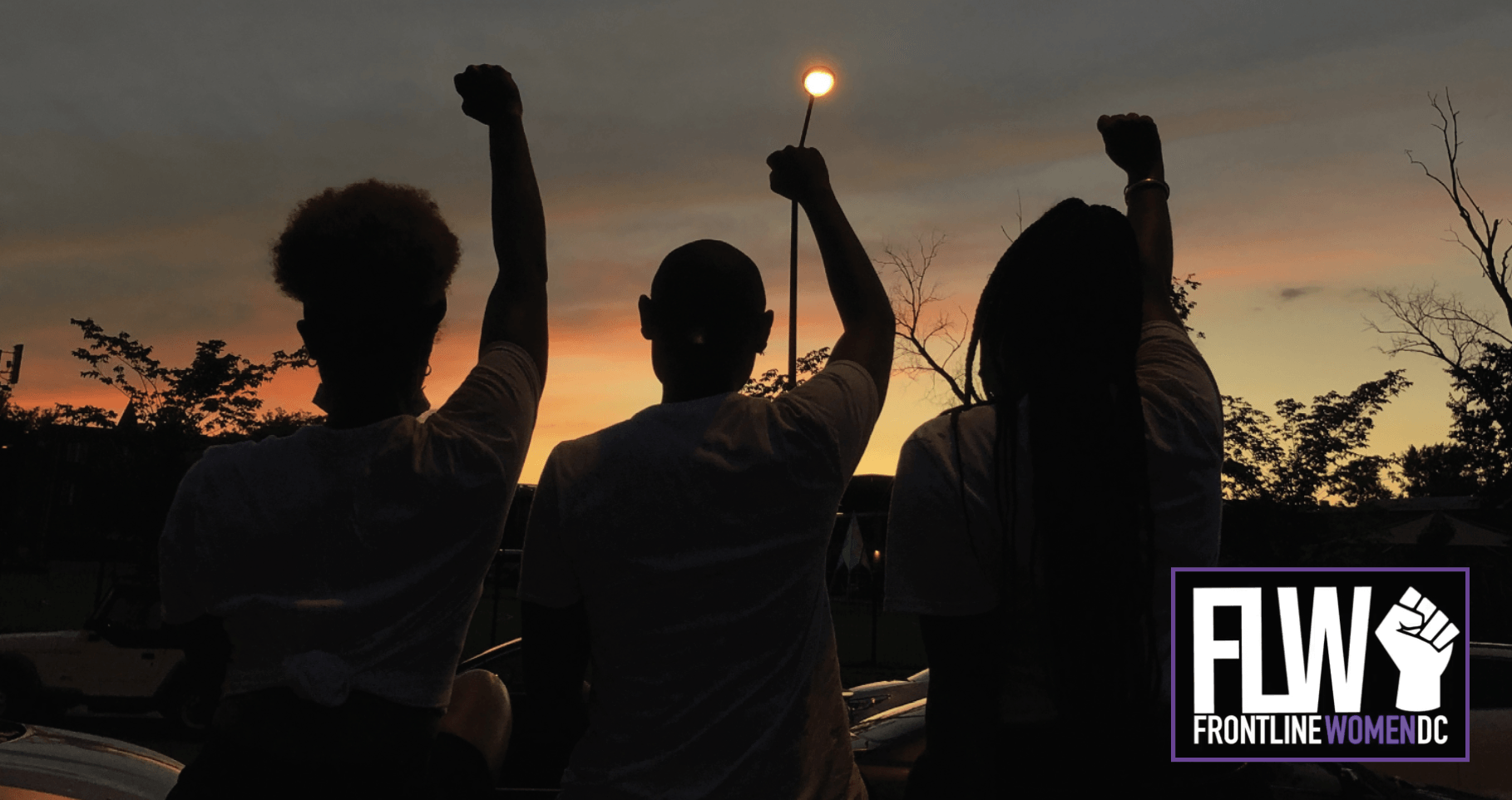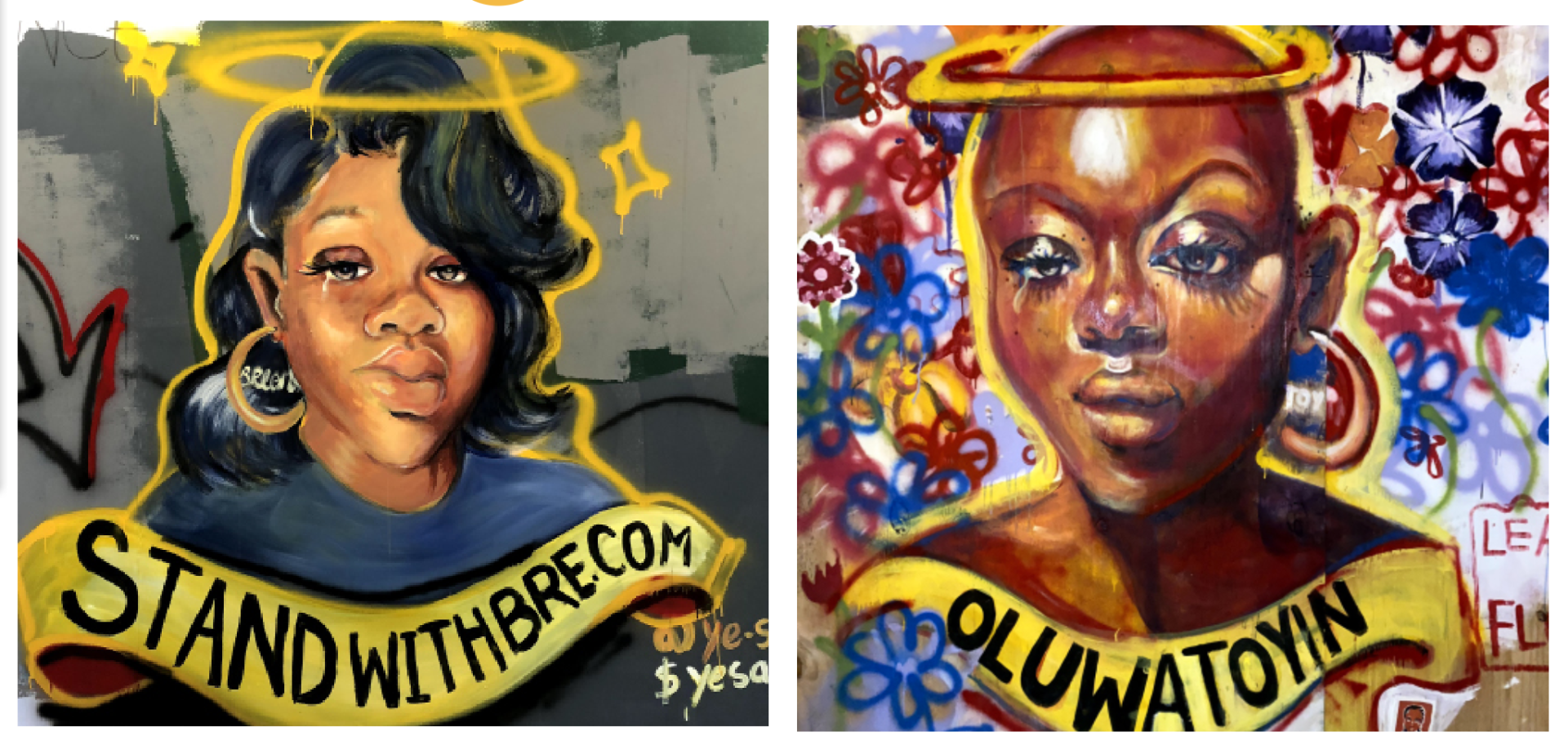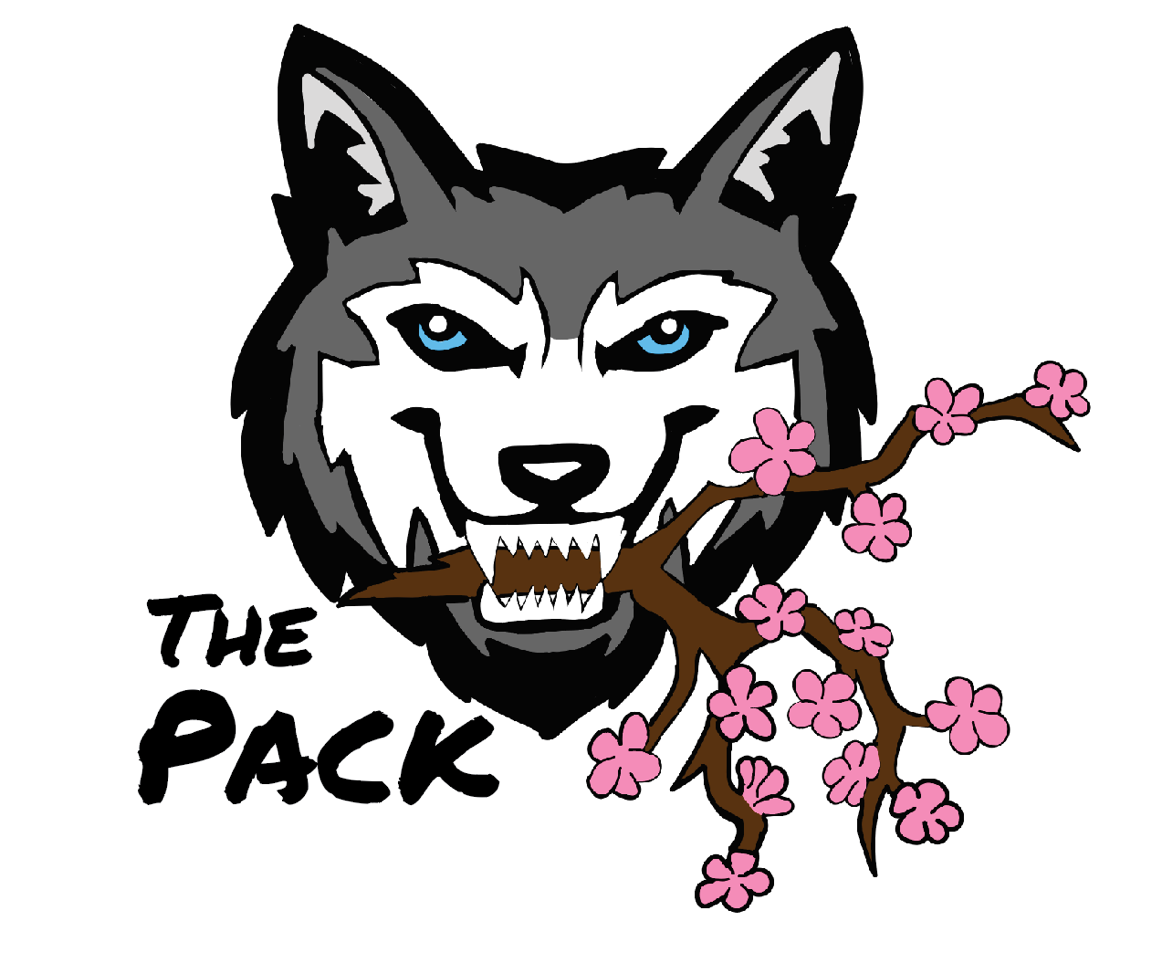Keyonna Jones knows the Soufside has something to say in the Arts
The D.C. Native has worked on Murals such as Black Lives Matter Plaza, but her true goal is to reshape the art community in the forgotten part of D.C.

The Southside of DC, affectionately referred to by many as Soufside, is often misunderstood. Many think of the violence that takes place in Wards 7 and 8, and the discrepancies in the amount of grocery stores and hospitals this area has in comparison to other parts of the city. While many attribute negative connotations to the Soufside, many see it as home to some of the most personable and resilient people you will ever meet. They see a place where the talent is unlimited in terms of sports, art, music, food and much more.
Keyonna Jones has long been one of the people who has seen the potential for the Soufside. Jones is a creative in all facets of the term. She is the executive director of the Congress Height Arts and Culture Center, and touts herself as a one woman band who will get whatever needs to be done to advance the space of art within her part of the city. Keyonna has pushed initiatives forward such as SoufsideCreates, and since 2015, the CHACC has been a creative hub that artists can have exhibitions at, small businesses can vend, and people of all ages are exposed to new ways of interacting with their artistry.
In 2020, during the heart of the pandemic and racial justice protests within DC, Keyonna was approached with a tall task. She and other artists in the city were approached by the Mayor to paint the yellow Black Lives Matter mural, located now at what is known as Black Lives Matter plaza in downtown DC. When Keyonna was recognized as one of the lead artists, and pulled from anonymity, she used the press she was receiving as an opportunity to continue her mission, push forward the creative arts space in southeast DC.
I visited Keyonna at the Congress Heights Arts and Culture Center on MLK Ave in SE, to pick her brain on the past few years, and her mission of making art accessible in Southeast DC. Here is an excerpt from our conversation:
Who are you, how would you describe yourself and what you do?
I am Keyonna Jones. I'm the founder and executive director of Congress Heights Arts and Culture Center. I'm a full-time artist as well, and a mother of two, born and raised Southside.
Tell me about what the center offers to people and your role here.
So the center is a safe hub. Like literally we have been named under Mayor Bowser as a safe place here east of the river, but we're a multitude of things. We're an art gallery first and foremost that supports black and brown artists. We offer programs and workshops of all kinds, health and wellness, art included. We collaborate with other nonprofits that have great programming but need space. Then we triple as rental space for small businesses, artist studios, and for the community.
As a nonprofit do you face many challenges or issues with funding or going from month to month? Can you speak to that a little bit?
Absolutely. So one, just being an art gallery and a nonprofit in Southeast is hard, right? Being in Southeast as people know, we have been historically left behind, historically forgotten about, historically underserved and underprivileged. So everything over here is a struggle. Getting funding is very hard, being a one woman band and having to manage all the things that is here and adding grant writing to my hat is hard, but thankfully we have a Mayor that understands the value and power of art and has a lot of different support and resources that can help artists and art spaces like ourselves. We have the DC Commission of Art and Humanities that is our bread and butter of how we are able to program and move. We just do our best. The work that we are here for is more about healing through art. Not just the whole art expression, but also teaching economic stability through art, demystifying that whole thought process of a starving artist. So I think with that passion and that mission in mind, we just keep doing the best that we can, with what we have.
Seems like you're very passionate about this place and art in DC. How important is it to you to be cultivating an art space in Southeast?
It means everything to me honestly, and I think, just now we opened our doors in 2015, but I think I'm just now really understanding the gratitude of how much we've done and how much we've changed the neighborhood and the appreciation of art. For me it's real personal. Like I said, I was born and raised in Southeast. I was raised in this area and I tell people all the time, I kind of grew up as a weirdo because there was nothing over here that nurtured the spirit of a creative, like nothing when I was young. So I was fortunate enough to leave east of the river and be able to go to the other side of the city, and went to private schools where they had art classes and art resources and saw it there, and grew up as an art kid.
But as I went through life, kind of just got removed from it. So until 2015, it was never a thought for me to create an art gallery ever. I was going to be a journalist and mind my business, but when I came back home...I tell people this all the time as well, the center self manifested itself, it was what I needed and what the community needed, period. One, for the creatives and the other weirdos that were growing up with no creative spirit to be nurtured. And then two, just for what we deal with in the hood, we need a way to express and to release, right? For the things that we see in the hood, we needed art to beautify our neighborhoods and to make us feel better about what's going on here.
And then finally, we needed a space for makers and small businesses to be able to push who they are and what they are. So now being able to do all of that and then some, as development comes and we're fighting against gentrification, we've gotten big partnerships with the people that are coming in our neighborhood and able to safely keep our narrative going and it be from us. So honestly, I'm really proud of myself. It's really an honor to be a tangible example and reflection of what can be and what can come out of Southeast because people just don't believe it's possible and I'm sitting right in front of you.
You just talked a lot about how you can see that this area needed a space for people to have a creative outlet to be expressive, to give them different options or expose people to different things. You talked about your experience of how you had to go across town to get certain things regarding art. With your work so far, how has the connections you've made with artists changed your outlook on the art scene here? Has that inspired you anymore?
It definitely inspired me, because like I said before, I had completely got away from art and I was just doing journalism, and then after I left the radio station I was working part-time with my dad doing property management, and that's kind of how this space came about. My father actually used to live in this house. My siblings grew up in this house. My father changed it into a business space for himself, and then let me transform it in 2015.
So this is a personal space.
Yeah this is very personal and I think again, it speaks to, we're also a reflection of legacy, and what it means to keep property, own property, and be able to transform it over and over again and evolve with the times and be able to reap the benefits. Like I said before, kind of fight against the negative spaces of what gentrification can bring. But when I opened the doors, it was literally about all the things that I said and supporting black and brown artists. And at that point, I had completely forgot about the fact that I was an artist, because I was so deeply removed from it. I mean decades of not doing anything with art, but helping all the other artists and teaching them things, it brought me back to my art.
It brought me back to full time artistry. Now I'm doing tattoos and I'm doing my own murals and graphic designing and connecting with the same artists that I supported before. Now I'm in the streets with them. So definitely an inspiration in that way, just getting back to my personal artistry. Definitely inspired by other artists and collaborating with them. I guess I'm inspired by creating inspiration for other people too. When I see somebody come to the space and they're blown away by the fields or somebody leaves one of our events or our programming, or people have their first solo exhibition; it's just like the feels that they have, it inspires me to keep doing what I'm doing, even though we're fighting all these unfair things or the things that are really hard being a one woman band. I definitely get inspired and motivated to keep doing what I'm doing because clearly I'm doing something right.
Speaking of gentrification, you being a native of the city then having an art space on this side, how have you seen things change within Southeast in the last 10 years?
I'm fortunate to have all these perspectives. Being a native, being an artist, being east of the river. But I also have the perspective of being the daughter of a man whose been very influential in the city, my father, Mr. Phinas Jones. My parents met in the council and I was born in 88, so basically I'm a council baby. I grew up around Marion Barry being my uncle. Mrs. Barry is my godmother, and just around big city legends that are no longer here. So one, seeing all the things that they were fighting for growing up and hearing my dad's meetings and hearing what Marion was fighting for and now kind of seeing it be reality. But the other thing that you also see is the things that were being missed in those speeches about telling people that all this development would come at some point, and to start owning some things, starting to get ownership.
So it's unfortunate to see a lot of people that have been here for years and can't afford to be here or have been displaced for whatever reasons. But it's also on the other side, there's duality and everything, good and bad, light and dark. There's good things that have come from gentrification, which is the new development that comes here. And the people that did listen to all that advice or did have ownership, we get to sit here and reap those benefits or partner with those benefits. An example of that is right down in St. Eve's a couple blocks away from the entertainment sports arena where the Mystics practice. And we got Washington Go-Go games down here. Now they're building housing and parcel 15 and food and hospitals and all types of stuff. It takes time. So we have to be patient, but now it's finally coming around and it's cool to see. We got restaurants, we got Busboys Anacostia, we got different eateries. We're known to be a food desert so it's important for these developments to happen, but it's up to us to be able to be here to reap the benefits. So it's just been interesting to watch things move.

Talking about growing up being around council members and influential people from DC, do you feel an obligation to continue to serve the community?
Do I feel an obligation? I think it's just really in me, I was having this conversation with somebody else the other day because I have siblings. I have a brother that literally has my father's name and they're older. So they were around the same things, if not longer. But it's just about drive. Everybody has a different drive. Everybody has a different mission. Everybody has a different intention. I don't think I ever felt I had an obligation to do what I'm doing, it was just in me. I cannot help it. Sometimes I wish I could. I say all the time I wish I was just a regular old person that had 9 to 5, mind my business ,go to happy hour afterwards, got a weekend and I do my thing, but that's just not how I'm set up.
I've gotten a little bit better in terms of balance and boundaries with myself, because it can be very stressful. It can be very emotionally painful. I'm an empath, so I'm very energy sensitive.
Talk about your artistry a little bit. What mediums do you like to use for your art?
I'm a tattoo artist. I do large scale murals in the city now. I get on canvas a little bit. If I'm on canvas, I prefer acrylic markers. If I'm gonna use acrylic paint, then I need to be going wide scale. Digital art, definitely. I am a published fashion stylist, so I definitely love working with fashion. I also do photography. I sew a little bit. Literally wherever spirit leads me, I'm going to try it.
That is usually how it is for creatives.
Yeah, and most of 'em are hobbies. And if I put it to the public and it's they’re like, oh, I need that, I want that...I work out the expenses and get a price. That's how all my services have come around.
But art has really been my saving grace. Just in transparency, probably about two or three years ago, I fell into one of the darkest spaces of my life. It was literally just my kids, my art and my therapist, is what saved me. And so I see art as a complete healing tool. It's like a universal language. You can look at art anywhere, everywhere and it's something that you can understand in your own right. Also it's just a catalyst for stronger conversations. Two people can look at a piece and see all sorts of things. So it's just my life. That's what I do.
You talked about how art can be a catalyst for conversation, can invoke and inspire thought. I would say DC has a very unique art landscape across the city in terms of the murals you'll see on certain walls, the sculptures, and how they kind of reach out to different artists within communities to work on these different types of projects. How do you think art ties into DC's identity?
It's really important. Some of the art that you see, especially if it's in a historic place, is telling you about the history of that place. Especially the sculptures and the parks that have murals...the figures that they're putting in, it's telling you about the history of DC. That's why I think it's really important, especially for black artists and black natives to be a part of that process, to be able to control the narrative and make it real. But then also there's this space, especially because I'm in that space with doing murals... there's politics tied to everything in the city. So sometimes it's really hard to get around those things or the things that they want you to do. But also DC is a hype beast city too, which is really annoying if you are not popular, right?
Explain that a little bit more.
Hype beast for me is like... people get hyped behind you, and then there's just a beast that pushes it, and pushes you and pushes your brand. And if you are popular it's no problem. All you gotta do is say one thing and then people are going to show up right? But if you're not in that lane, or you're not popular, it is really hard to get some traction here. Then you keep seeing the same artists, you keep seeing the same thing. I think I struggled for a long time because I wasn't part of the hype beast. My name wasn't popular. The only reason why now my name is getting popular is because I help paint the Black Lives Matter Mural down at the white house.
With that, I was able to get a lot of traction and really leverage it. If you talking about me, you're going to talk about the center. So now it's like, "oh, you got an art gallery in Southeast?' And then all you gotta do is walk in this space and you're gonna feel it. So it's just like, it's unfortunate because we have vast talent here, like crazy talent. But again, with the politics, you know the right people, you know the right names, they going to push you up. And then those people, if you're not connected, you struggle a little bit or never get seen. So I think if anything, when you was asking me about an obligation, that's my obligation, to push the black and brown artists of DC, specifically Southeast.
To push them and let them be seen. That's where I am. There's a lot of gigs that I could take, but I'm not doing that. Because I know there's a lot of other things that's for me. I tell people all the time,what's for me won't miss me and what's not for me won't catch me. The more that I give, I got to be ready to receive because my hands are open because I'm steady giving. So that means something's going to come back to me. So now I'm putting other artists on. Other artists that I know are professional and they can show up and do their thing. Now I'm giving them gigs so that they can be seen and they can start getting on the map of this stuff because it's just not fair for the same people to just get the opportunities over and over again. That's weak. That sucks.
So it seems like that perspective ties into here and opening your space to different artists.
Yeah because I can give you opportunities. And we do things where I can give several people opportunities. Like Art All Night here is wild. I have probably over 200 artists that we support just out of here only. Then it's thousands of artists on the corridor that we bring. And if you look at our mission, that's it, to expose, inspire, educate, and heal all through art.
You mentioned the Black Lives Matter mural and how you got a lot of press surrounding that. Talk to me about art’s connection to activism within the city. It seems like that's something eventually artists can't really avoid. I mean, I'm sure they can choose to, but I see a connection between artwork and political messaging or statements.
So that was a crazy experience and I actually really couldn't help it because I was out there in my own brand and my gear, and somebody saw me on TV and that was the only reason why I got pulled out of anonymity. Everybody else decided to remain anonymous. I was still deciding whether I was going to be anonymous or not. But once I went out there, I was wearing my brand and people saw me and were like, "yeah, we just seen you on TV." So that's kind of how that popped out, I couldn't really go back once that happened.
But it was also really important because... when you talk about activism, it was really important for black people all over the world to see that there was another black woman out there doing that, for queer people to know that there was a black woman out there doing that. Representation is just important, period. And for that to be such a big thing at the time during protest, when Trump was acting crazy, when the mayor was fighting with Trump, that was something serious. People ask me all the time, do you consider yourself an activist? I would never put that on myself, ever. Now does my art do activism? Absolutely. I think all art does activism. Like we said before, it starts a bigger conversation. Art just does that by itself, especially if you going to be public with it. If you're going to be outside painting, you are doing activism work, period. And I don't know if you want to call yourself an activist or not, but that is the work of activism. That day really affirmed and confirmed for me the power of art. Literally 24 hours later, you saw that thing being replicated around the world
And so it was just like that it is a domino effect and I think it just speaks for itself. It became replicated around the world and it started conversations around the world that everybody was dealing with this one thing, which is the fact that black lives matter and people need to respect them, especially the police. It was just amazing to be a part of that.
Talk about that a little bit. During that time everyone was in the house. It seemed like everything was so magnified and as you say, that piece of artwork traveled throughout the country, people were doing replicas of it. There was a lot of support, but with that comes drawback and criticism as well. What did you see on that end, and what was your perspective on it?
So I'm not a politics girl, even though I'm a council baby and I understand politics and I grew up around council members. Politics is not my thing. I just understand politics and I know how to leverage politics. But I always show up as myself, which is an artist, and I call myself a healing teacher in the sense that I'm healing to teach, and I'm teaching a heal. All of that is through art, so I showed up for the art part, you know what I'm saying? That was my job. I feel like everybody has a role in this world. Some people got to make phone calls. Some people got to make sandwiches. Some people got to make art, and that's me. And it was conversations afterwards where people was just like, this is performative. Just because you painted black lives matter on the street, that doesn't mean anything, what else? We need you to defund the police...
What did you think of the Defund the Police addition people added to the mural?
That same night...and I know a whole bunch of people that did that.They came out there and added the defund police part, and people were calling me and sending me pics saying you see what they did to your stuff? And I was just like they didn't do nothing to my stuff. They left it there, and then they put up their sign beside it, and I thought it was very creative. And if we're allowed to do that, why can't they do that? Again, it sparks another conversation right? It creates more conversations and its public art, that is exactly the point of public art. So I absolutely loved it. And like I said, it started more conversations that needed to be had, so I love it.
So what would you say is the most fulfilling aspect of your work here at the center?
Just seeing people feeling good off of being black, feeling good off their own culture. Raising southside, showing people that there's a high caliber in southside. I think that's just really my favorite part, how we represent Southeast. We just lit as hell. And I think just representing Southeast, that's an honor for me, because I've been to a lot of places. And I can hold my own and represent Southeast the right way, I can be in those rooms and those conversations. I can hold my anger, I can check somebody when they are saying stuff. I'm just capable to represent here, so I love it. It's basically like I'm a council member, but not, because I would never do that!
Ten years from now, where do you see the center and how do you see art developing in Southeast?
By 10 years the center will definitely have its own artist housing. Like we will have our own building. I'm thinking of probably six units that will house artists to live and make their art in, and then we'll funnel them back in here so they can do their exhibitions and their programming workshops. We'll have more space. Ten years we should have two buildings with artist housing honestly and everything filtering and into here.
As far as art on the south side, it's going to be everywhere. It's going to be murals. It's going to be sculptures. I'm talking about metal sculptures, bronze sculptures...We're planning on putting a wooden sculpture out here from a tree bark. You're going to see all types of art. You're going to see stuff hanging off people's gates. You're going to see some of our biggest figures on corners as statues and so on. The schools are going to be covered with murals inside and out.
There's going to be public art. There's going to be art back in schools, probably full time.There's going to be retail spaces where you're going to see local makers and local brands popping. We're going to have more professional artists, more artists that know what a W-9 is. It's going to look real pretty. It's going to be bright. It's going to feel good. It's going to be good.
Throughout this you've spoken on facing certain hurdles or obstacles. When you face that adversity, what keeps you going?
It just ain't no damn way I'm going to stop. I started 2015, I've been doing this thing by myself since then and made it through a pandemic. And I mean, we made it through a pandemic without opening our doors, but we were able to renovate, we came out of the pandemic better than we went into the pandemic. And just what I know we've been able to do in this time so far. The things that people have said to me, people have gotten emotional with me as well talking about how much they love this space. The other nonprofits that we work with and the programming that we bring in here. The mothers that we touch, the kids that we touch, the elders that we touch. I say we work with people from ages 5 to 105 just because that's how universal art is. It's for everybody. Just the fact that I was a kid and didn't have something like the center here. It's imperative now that we're here, there's no way that we cannot be here.
What do you love most about DC? And it could be Southeast specific.
It is definitely Southeast. T Cloud from Mystics, I was on her live and she kept on saying she loves being an underdog. She loves the fact that people count her out. And I think that's a part of it. I love soufside, that's why I created the brand Soufside Creative. Our tagline is, we are a different kind of creative. I think that's why people feel the way they feel about us. That's why they have the fear, because we're just so different, we're unknown. And when you go anywhere, any soufside, it could be soufside Detroit, soufside Chicago, any soufside, you going to know you in soufside and you got people repping it.
I have immense pride about being from soufside. I know how special it is over here. We got the best views of the city. I mean you can't see the rest of DC the way you can see it from coming over here. And it's a reason why there's a bridge that separates us. It's a reason why you gotta crawl some waters to get to us. It's also the reason why we were the last spot to be gentrified. We just super special. So my favorite part about DC is definitely soufside.


